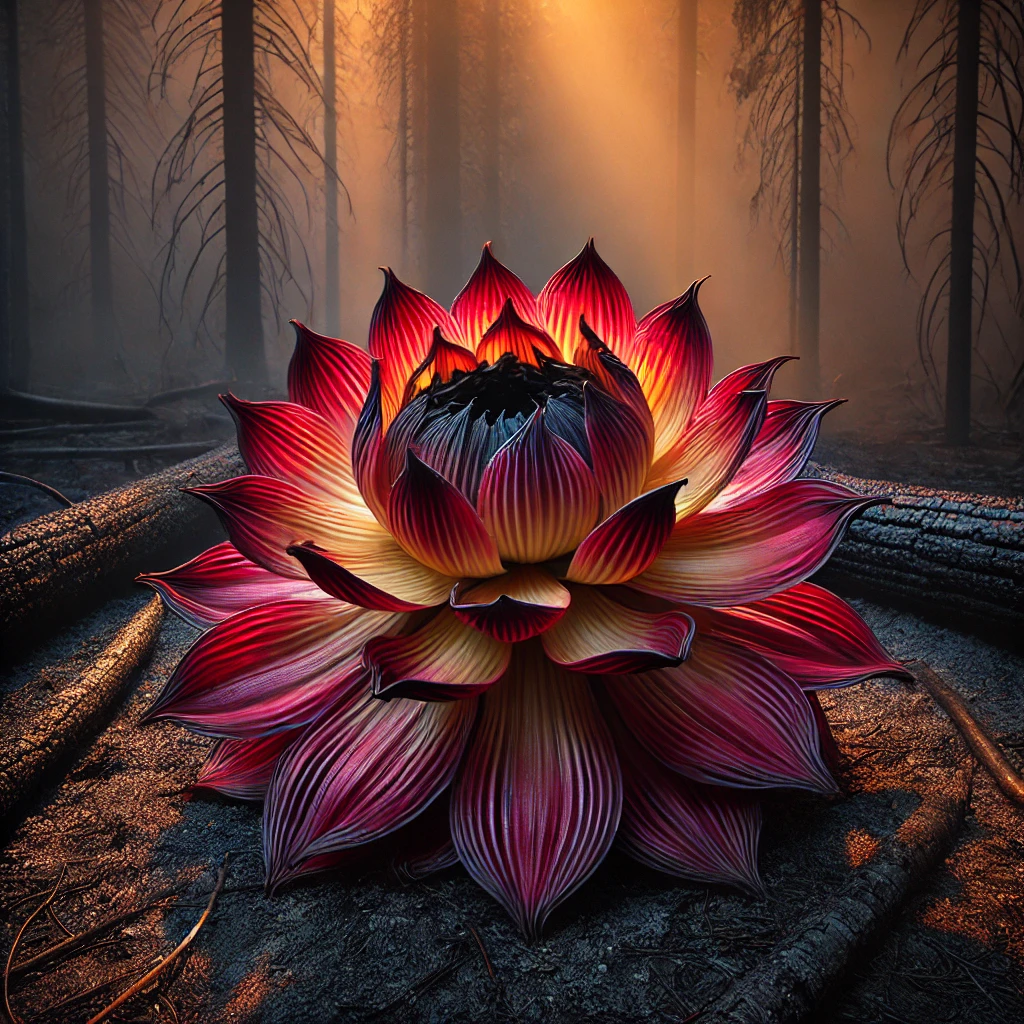Description:
Cinder Flare is a rare, stemless bloom that appears in forest glades scorched by wildfire. Nestled against the blackened forest floor, its radiant, ember-hued petals resemble a sunflower forged from flame. It blooms low and wide, drawing warmth from the ash-rich soil. Known as a symbol of transformation and endurance, its arrival marks the forest’s first breath after destruction.
Growth & Structure:
- Grows without a visible stem, emerging directly from the charred ground like a fiery rosette
- Blooms in fire-cleared clearings, often among fallen logs, soot, and the first green shoots of regrowth
- Petals may be partly buried beneath ash and detritus, giving the bloom an otherworldly “rising from ruin” appearance
- Appears days to weeks after a burn, sometimes alone, sometimes in scattered rings
Leaves:
- Hidden beneath the bloom—short, dark, and thick, textured like cooled lava
- Serve primarily to anchor the flower to the soil and absorb minerals from ash
- Slightly warm to the touch and scentless
Flower:
- Wide, flat bloom shaped like a sunburst or flame wheel
- Petals range from deep crimson to gold, edged in black as if singed
- Central disc is coal-dark, matte, and dry—often glowing faintly at night like embers
- Releases a soft crackling sound in the stillness, like wood settling after a fire
Emits no scent, though some claim to smell smoke or warm stone near it
Folklore:
"Called Ashwake or The Forest’s Breath, the Cinder Flare is said to bloom where something old has burned away to make room for something new. Forest spirits are believed to walk among them, gathering the last heat of what was lost. Some believe that if you whisper a sorrow to the bloom and leave behind a token, it will carry your burden into the earth. Others claim it blooms in the shape of the grief it heals."



Comments